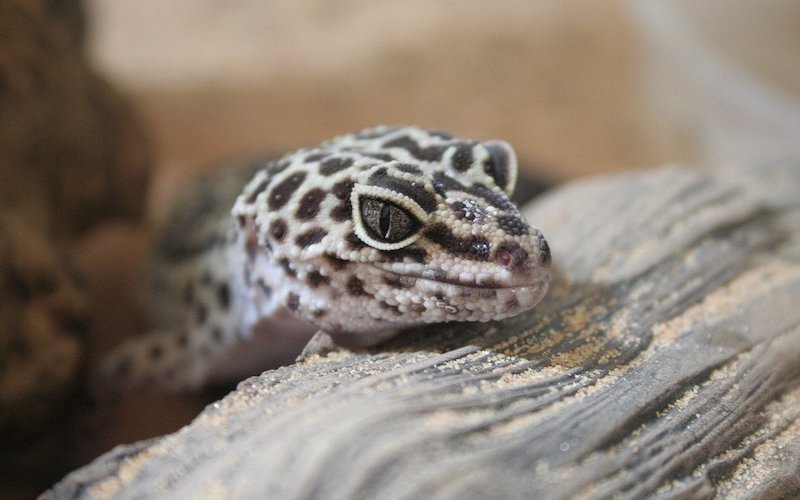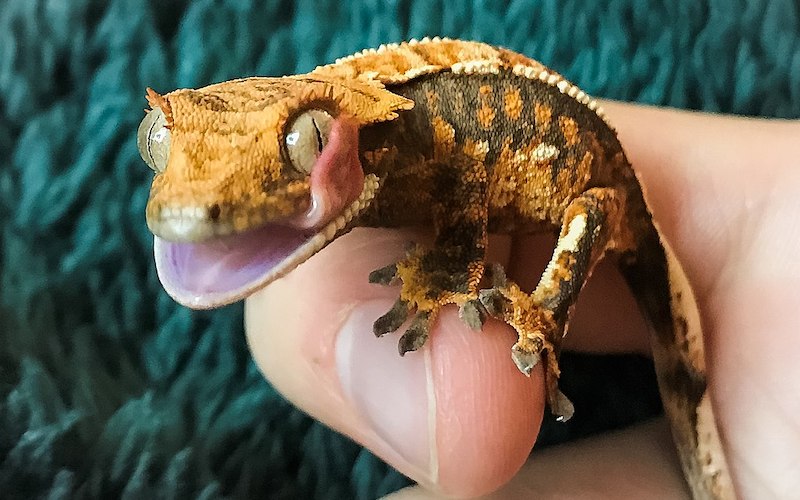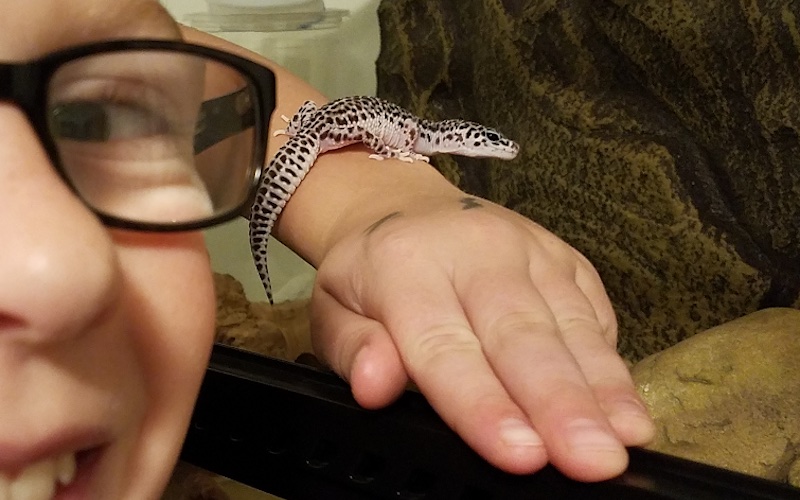There are over one thousand species identified in the family of Gekkonidae belonging to the lizards which includes Chameleons and Geckos. They are found throughout the warm regions of the world and a few in some northern regions, particularly North America and Southeast Asia. Geckos are popular and relatively low maintenance pets. If you are thinking of getting one – or you are a brand new owner – we hope that you will enjoy this guide to keeping a Gecko Pet.
What are Geckos?
Geckos have flattened bodies, strong toes with adhesive pads to help them climb vertical surfaces and cling to ceilings and walls; long tails for balance; many species can change colour according to their surroundings.
Their scientific name is derived from the Greek words gecko meaning “earth-glue”; hence the ability geckos have of walking up vertical surfaces and glass.
Most geckos, like most lizards, do not blink while sleeping and are vulnerable to attack from birds of prey who can spot the immobile eyelids from a distance. Some species which live in arid regions come out at night or after rain when their predators are less active.
For having such small brains, Geckos have a lot of personality. Their behaviour depends on the species, as well as environmental conditions and frequency of human interaction.
Some Geckos are Nocturnal!
Take note that some geckos are nocturnal (active at night) while others are active during the day.

What do Geckos usually eat?
Their diets consist mainly of insects and other invertebrates, although a few species also eat fruit. Some tropical species have been known to feed on small lizards and mammals.
Setting up your Vivarium
Most Gecko Species need a Vivarium with heat pad and a setup to monitor temperature. You will need to get them a water bowl, plus plants and rocks to hide under and make their habitat feel natural. The vivarium floor will need to be lined with a substrate.
Do not allow them to Roam free!
Allowing them to roam around your house at will is not very wise and can be dangerous for you and them. They may ingest poisons or get into a fight with another pet in the house, such as your cat or dog. They can also be very difficult to find when lost, and if they are not safe in their vivarium, a sudden change in temperature could result in serious health problems or even death.
Look at the Body Language
When they feel threatened, geckos may lick their paws and smear the sticky residue on their bodies to make themselves harder to grab; when disturbed, some species thrash about wildly with their long tails, which are almost as long in relation to body size as those of many lizards.
Check the laws of your Country before Buying one
Check if keeping geckos as pets in your area or country is legal before buying one. It’s also good to know which species are native to the area you live in, or state you will be keeping him in.
In Australia, Geckos are available only from licensed breeders or wildlife dealers. The keeping of most species is not yet legal in some states such as Western Australia and New South Wales, but there has been a push for legalization. Importing an animal into Queensland however is forbidden by law even with approval of the State Government. Care should always be taken with any animal to ensure that your living environment is well suited for a gecko and that you have the knowledge, time, and money required to care for him.
Which Species of Gecko?
It’s recommended that only the most hardy species from areas with little seasonal change and wide temperature range are kept as pets. It should also be taken into account the gecko’s apparent ability to acclimatize itself to variations from its natural habitat.
Some of the most popular Geckos for pets are Leopard Geckos, Crested Geckos and Flying Geckos. Do your research to find the most suitable species for you and don’t rush into buying one. If at all possible, it is recommended that before purchasing, potential owners should observe a gecko in captivity for several days to check on their general health and behavior.
A good pet store will always be willing to oblige you in this.

Gecko Health Problems
It’s also good to know the various congenital diseases that can affect certain geckos, such as metabolic bone disease (MBD) and Metabolic Bone Lesions (MBL).
Metabolic problems are a common health problem with reptiles. MBD is especially common in captive bred animals due to poor husbandry, over crowding and lack of UVB lighting. It can also be a problem in wild caught geckos which have been shipped from distant countries.
Without MBD there are still other problems such as Calcium Deficiency Disease (CDD), calcium bumps on the anurans or even tumor like growths on the skin. These are caused by a lack of calcium in your pet’s diet.
Proper lighting is therefore important to the health of your animal. UVB lights will also help with Vitamin D3 production which can absorb through skin and aid in healing and strengthening bones, as well as preventing metabolic bone disease.
There are so many things to consider when keeping a gecko as a pet. So make sure that you do your research and get the right Gecko for you.
So if you haven’t already done so, do your research first and then go out there and get yourself a gecko!
If you enjoyed this article you might also like to read about Leopard Gecko Lifespan


3 thoughts on “Keeping a Gecko Pet”